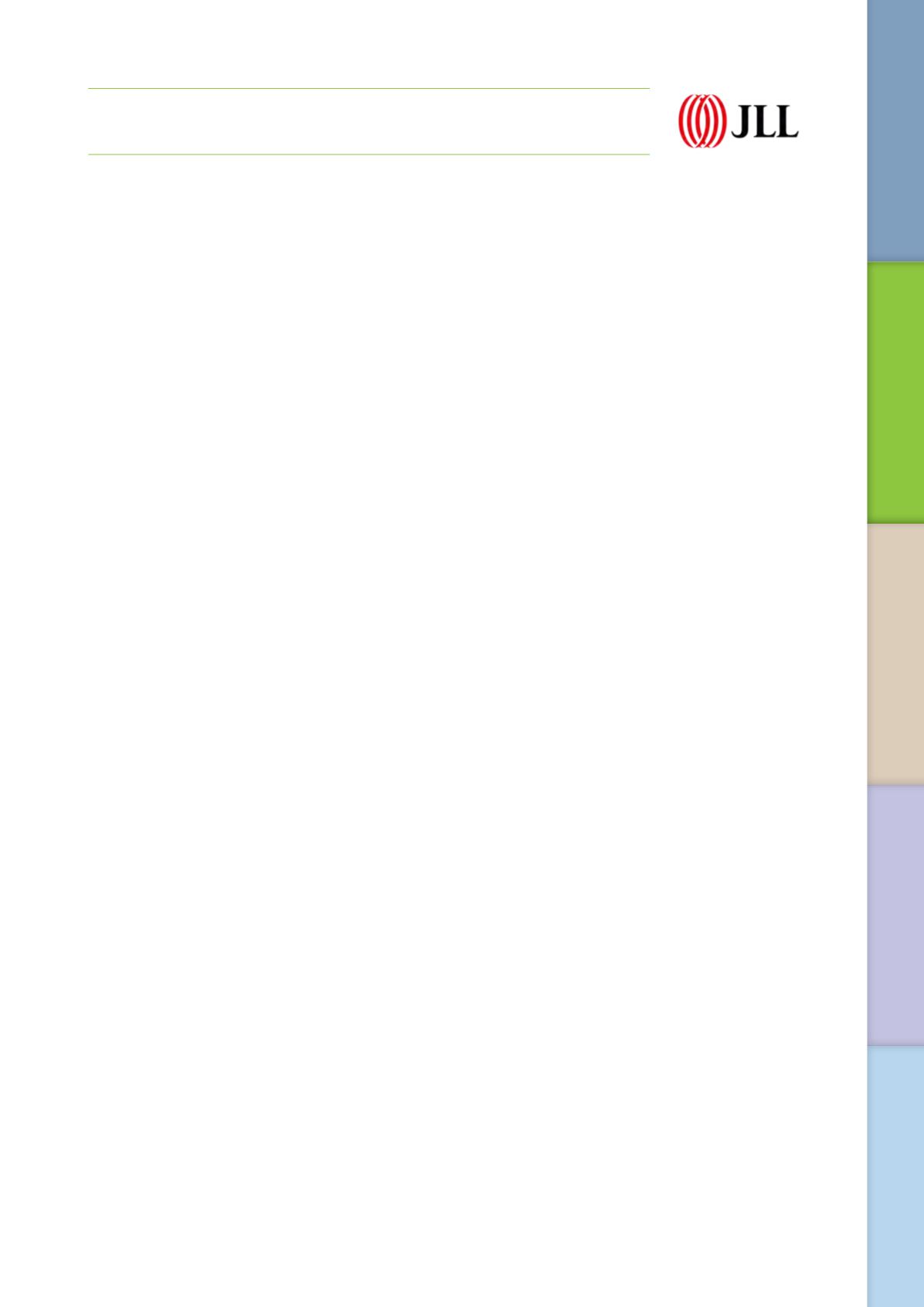

PERTH, AUSTRALIA
HOTEL PROPERTY SECTOR
MARKET REVIEW
PERTH TOURISM MARKET
Over the 2015/16 financial year, Perth reported 840,333
international visitors who spent 21,633,000 visitor
nights in the region. This represents 7.4% growth
in international visitors albeit with a 6.0% decline in
international visitor nights compared to the prior year.
When compared to Western Australia, Perth represented
approximately 94.6% of total international visitors with
an average length of stay in excess of 25 nights. Major
source markets include Germany, Japan, the United
States of America and Hong Kong. Of these international
visitors approximately 83.2% stayed in a rented house/
apartment/unit/villa or with friends and relatives.
In the same period, Perth attracted 3,892,459 domestic
visitors equating to 13,996,193 visitor nights. This
represents approximately 42.1% of total visitors to
Western Australia and an average length stay of 4
nights. Nearly 50% of all domestic visitor nights were
for the purpose of visiting friends or relatives and this
is supported by approximately 59.9% of visitors staying
with their friends or relatives.
HOTEL MARKET PERFORMANCE
The Perth hotel market performed strongly over the ten
years to June 2013 due to minimal new room supply
and strong demand growth underpinned by the buoyant
mining sector. According to the Australian Bureau of
Statistics (ABS), Perth hotel occupancies peaked in
2011/12 at almost 86% while market ADR peaked in
2012/13 at $197. Market Room Yield peaked at $166 in
2011/12, representing a 63% increase in five years alone.
According to the latest available ABS data, over the
year to June 2016, Perth hotel occupancies declined to
79.9% which represented the fourth year of a softening
occupancy profile. Market ADR has also declined from
the 2012/13 peak to $171 over the year to June 2016,
resulting in Room Yield declining by around 17% from
its 2011/12 peak. This trend reflects subdued demand
arising from the mining sector slowdown along with a 9%
increase in room stock over the five years to June 2016.
EXISTING AND FUTURE SUPPLY
After a period of constrained supply, the Perth
accommodation market has moved into a development
phase with increased development interest and activity.
Perth is currently one of Australia’s hotel development
focal points with a strong pipeline of projects. The
current pipeline was to a large extent driven by significant
resource and corporate related demand between
2009 and 2012, during which time there was relatively
limited hotel development, as well as strong overseas
investment.
Development activity has yet to show signs of
slowing down, and a number of new accommodation
projects are under construction. Notwithstanding
this, the longstanding challenges of standalone hotel
development (including financing and the costs versus
capital values gap) are anticipated to temper the
development pipeline and the progression of numerous
projects to the construction phase.
With regards to anticipated future supply, JLL Hotels &
Hospitality Group are aware of seven properties currently
under construction in Perth City which once complete will
result in a net increase of 1,116 rooms or 17.9% on the
existing stock.
We are also aware of several mooted accommodation
projects and note that mooted projects include
those where a Development Application (DA) for
accommodation rooms has been approved. This differs
from likely proposed projects where a DA has been
approved and JLL has determined that construction is
imminent but not certain.
HOTEL MARKET OUTLOOK
Perth’s accommodation market experienced strong
growth between 2010 and 2012 as the resources sector
drove corporate demand for short term accommodation
in the region. While demand from this segment has since
softened, domestic and international leisure related
demand continues to improve. The shift in market mix
has impacted the ADR achieved as leisure is typically
lower yielding business and corporate contracts have
become more difficult to secure.
Trading performance is anticipated to moderate over the
short term as a number of short term accommodation
developments currently under construction will enter
the market.
Notwithstanding this, longer term performance will be
dependent on the markets ability to absorb the new
supply, the recovery in the corporate and conference
segment as well as the continued growth in leisure
demand. Investment in major infrastructure projects
such as Elizabeth Quay and the growth in domestic and
international visitation, supported by the lower Australian
dollar, are expected to enhance the longer-term outlook.
As of 1 March 2017
31
Annual Report 2016
MARKET REVIEW


















